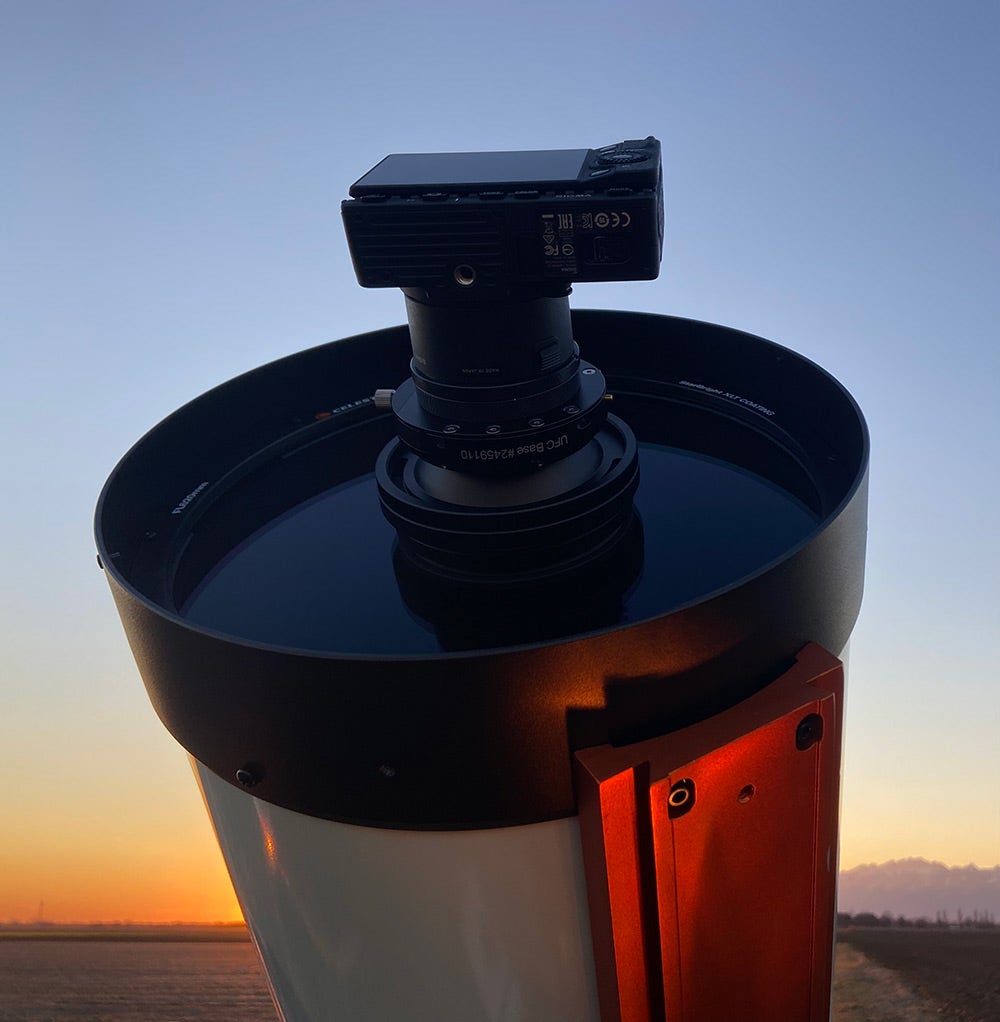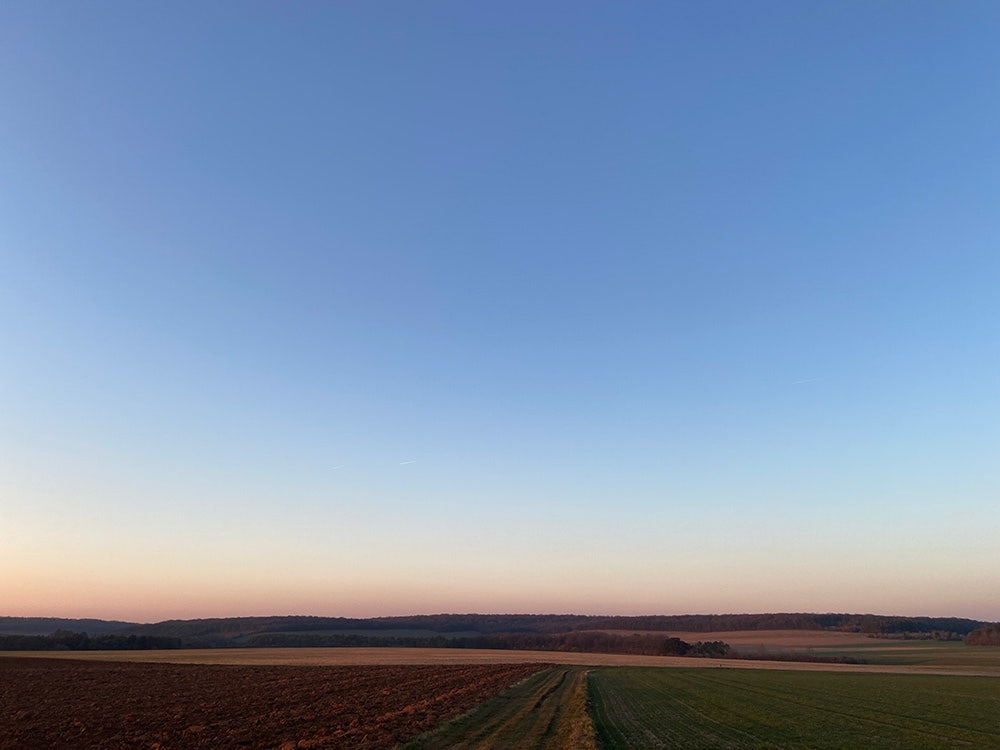Astro Photography with Mark Ford and the SIGMA fp
"The start of the journey..."
I have always been fascinated by the night sky. In particular, the huge variety of Nebula and other Deep-Sky-Objects and the structures they contain. As such I have always had as a dream that one day, perhaps, I would be able to work with images of these objects myself. The launch of the SIGMA fp I took as the starting point for the journey to realise that dream.


Jellyfish Nebula / IC 443
H-alpha / O-III / S-II narrowband image, 20 x 4 min., ISO 1600, F2.2, 620mm
Clicking on an image of a nebula will open a larger version in the Prodibi Viewer. Having been encoded for maximum quality, there may be a slight delay to the image loading.
Copyright: None of the images in this article may be copied or reproduced in any form whatsoever.
Why the SIGMA fp? This camera was designed as a stills and professional video camera. In order to be able to take video for several hours without overheating the camera has a heatsink built into it. This can be seen on the sides of the camera. This means that the camera is able to control digital noise extremely well. There is one other type of photography where this is absolutely critical and that is astro-photography. Faint Deep-Sky-Objects need very long exposure times at relatively high ISO values (most often around 1600 being a good compromise) and thus the control of digital noise is a fundamental factor towards producing a good image.


SIGMA fp in place with the TC2001 2 x Converter and Baader Filter
My choice of telescope is the Celestron RASA 11” (620mm, F2.2). Primarily driven by the desire to have as small an F-Stop as possible for the best possible light gathering properties. In the configuration of this telescope the camera sits in front of the glass (see image), which means that it is imperative that the camera is as small as possible. The SIGMA fp is the smallest full frame camera in the world – a perfect match.


With Pluto remote trigger and HDMI cable and telescope dew heater
As a tracker I have a 10 Micron GM1000. This needs a model of the sky to be built by going to ca. 20 bright stars in turn and aligning these exactly. I have used the IOS 6 setting on the camera to block the light of all but the brightest stars making the model building significantly easier (plus 8x zoom in the camera live-view plus 9x zoom in the field monitor – HDMI feed). My best results to date have been around <4 pixel drift over 40 Minutes = ~ 0,5 pixel drift with a single 5 minute exposure.


All set and ready to go …
Its been (still is) a steep learning curve… From the first outings under an 85% moon (Rosetta/Orion/Horsehead Nebulas) and hard, high humidity frosts (Think – “The Day after Tomorrow”…) to every set-up and focussing error I can think of (and several I didn’t) … Focus is achieved using SharpCap, which takes the camera live-view feed after feeding through a field monitor, which is how I do most of my macro work, via a video capture card and the Celestron USB Focus-motor. This is probably the most difficult task and something that would be almost impossible to achieve without the focus motor and computational interpretation of the diameters of the stars. At 02:00 in the morning, sub zero temperatures, and already 6-8 hours “on the job”, keeping the mental discipline to get the focus right is not easy.


Rosetta Nebula / NGC 2237
H-alpha narrowband image, 12 x 15 sec., ISO 1600, F2.2, 620mm
Since there are no “green” Deep-Sky-Objects, the green pixels (50% of all available pixels) in a full colour camera are very under utilised. The SIGMA fp I have, has thus been de-bayered (very many thanks to Daniel @ monochromeimaging.com). That means the blue/green/red sensor mask has been removed so that all the pixels can see all the colours (producing a monotone image). It now only has a glass screen that lets everything from UV to IR and have had a lot of fun using this as a terrestrial monochrome camera (some example shots HERE). Since I live in an area with relatively high levels of light pollution (Milky Way is rarely, if ever, visible to any extent), I need to work with “narrowband” filters. The images from these different filters are recombined to produce the full colour image. These narrowband filters are specifically tuned to only let through a single emission line: Hydrogen (H-alpha = 656nm), Sulfur (S-II = 672nm) and Oxygen (O-III = 501nm) so that much of the light pollution can be subdued. As such, stars in the images are either from H-alpha narrowband or a combination of narrowband shots (H-alpha / S-II / O-III), or, even more conveniently via short exposures, using its “identical” sibling, the SIGMA fp L (full colour / 61 MP) – Where star colours are present they are not calibrated in any way. All images are processed to taste via Adobe Photoshop (Postscript update: Image alignment I now do using Astro Pixel Processor). Accuraw Monochrome can produce a very good RAW conversion for de-bayered monochrome cameras and this has also been used for the primary RAW conversion.


Heart Nebula / IC 1805
H-alpha / O-III / S-II Narrowband Image, 21 x 4 min, ISO 1600, F2.2, 620mm
It has been a very interesting experience chasing the most boring landscapes and skies that I can imagine: Totally flat and no “red cloud” sunsets – A different kind of “Big Sky”. (Even if I don’t want to shoot an object when it is low in the sky, the bigger the view the more stars that are available to build the tracking model).


No landscape photographers here …
Everybody remember’s their “First-Time”: Well, I can tell you, after over 2 years of planning and research (and 9 months waiting for the GM1000), the first time I pointed the scope at “Barnard 33”, triggered the shutter for 30 seconds and saw on the field monitor the unmistakeable silhouette of the Horse’s Head appear (1240mm via the SIGMA TC2001 2x converter) – “YES!” – It was a pretty big smile! The data are terrible (85% Moon); the focus suspect; the tracking dodgy, but I don’t care – That is the moment and shot, I’ll remember …


Horsehead Nebula / Barnard 33
H-alpha narrowband image, 20 x 30 sec., ISO 1600, F4.4, 1240mm
Its been an interesting few weeks and I have have really enjoyed the start of the journey! The SIGMA fp in combination with the Celestron RASA 11″ and the 10 Micron GM1000 has shown that it can produce the results I was hoping for … I am very much looking forward to the next New Moon


Tadpole Nebula / IC 410
H-alpha / O-III / S-II narrowband image, 30 x 30 sec., ISO 1600, F3.1, 868mm


Soul Nebula / IC 1848
H-alpha Narrowband Image, 20 x 30 sec., ISO 3200, F2.2, 620mm
See more Photos
- Gallery of all images
(including new images added postscript)
Read more about the fp series by Mark James Ford
The SIGMA fp Camera
"The Little Cooking Pot"
The SIGMA fp L Camera
"Making the Leap"


Mark James Ford
Photographer & SIGMA Germany Ambassador
"Striving for perfection at every point of the creative process, no aspect of the representation of an image is left to chance. In no other branch of the arts does an understanding of the physical and chemical processes involved play such an important role as with photography. However, many aspects contribute to a final image and, neither the motif itself nor the format and certainly not the atmosphere, the time of day or the resulting colours and their representation are left to chance."
Website | Instagram



